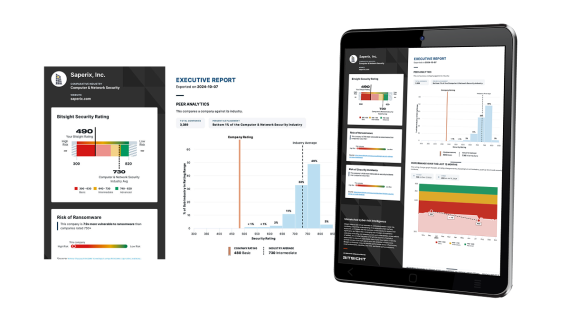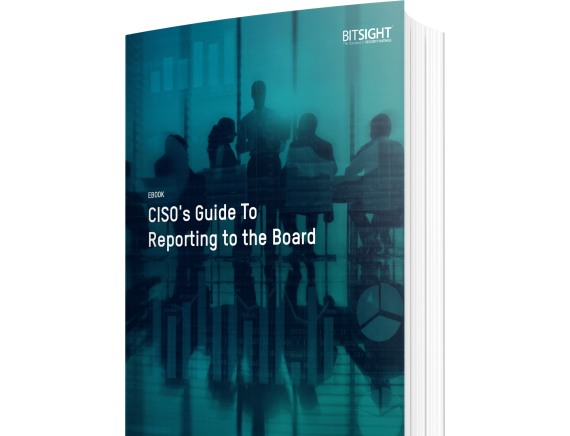Request a free executive report, which includes your security rating, for your company to find the gaps in your security program and how you compare to others in your industry.
4 Ways to Improve Cybersecurity Collaboration Between Security Teams and the C-Suite

Recent events have made cybersecurity a top concern among C-suite executives. The SolarWinds breach, Capital One incident, and Colonial Pipeline attack are just a few of the noteworthy events that have made CEOs and CFOs take active roles in discussions around risk mitigation.
Those discussions require managers, board members, and security administrators to take seats at the same table, but cybersecurity collaboration between these groups can be tough when everyone appears to be speaking different languages. While security administrators focus on the more technical aspects of cybersecurity, executives want to know “how much will a cybersecurity incident cost us?” -- and conversations often go nowhere.
With the right tools, resources, and metrics, security teams can improve collaboration with executives and board members to create more secure and financially sound organizations.
Stop talking about cybersecurity data. Start talking about real business risk.
Security data is important, but even more crucial is how security administrators present that data to executive teams. While business leaders are deeply interested in their organizations’ cybersecurity postures, they don’t want to be inundated with information about how many non-secure ports are in their corporate network, or the amount of times a firewall has prevented unauthorized access.
Instead, they want to know information directly related to business outcomes, including:
- How will a particular cyber event impact our financial exposure?
- What type of losses can we expect (Attritional? Large? Catastrophic?)
- What’s the potential financial impact of some of the more popular attack methods we keep hearing about, like ransomware and extortion attacks, or attacks on third-party suppliers?

Translate information into a language the C-suite understands and cares about.
This type of conversation may take some security managers outside of their comfort zones. But as security managers become more important to their organization's business success--and become elevated to senior leadership themselves--it’s critical they understand how to take the data they’re used to working with and translate it into something meaningful for their fellow leaders.
This is where financial cyber risk quantification comes in. Put simply, financial quantification is the act of quantifying cyber risk in financial terms. For instance, a security manager might understand that a "distributed denial of service" attack could take their systems down for five days, but what does that mean in terms of a financial hit for the company? Financial qualification can give security managers and management teams a good estimate.
There are many reasons why translating cyber risk into financial risk is beneficial for everyone. With a better idea of the financial ramifications of a cyber attack, management might be more inclined to allocate more budget and resources to improving their organizations’ cyber defense systems, resulting in technology modernization, new hires, and more secure cyber risk management processes. Underwriters can better understand whether or not to grant a company cybersecurity insurance and, if they do, how much.
Simplify financial quantification and deliver results faster.
The last thing anyone needs is yet another drawn-out, inefficient, and complex process. Unfortunately, those are some of the common challenges with traditional financial quantification. It takes a long time to collect and analyze the right data and turn it into actionable intelligence.
That’s why Bitsight created Financial Quantification for Enterprise Cyber Risk. This add-on module to our Security Performance Management suite combines the power of Bitsight’s cybersecurity capabilities with Kovrr’s risk modeling technology for cyber insurance to deliver clear insights into the correlation between cyber and financial risk. Financial Quantification for Enterprise Cyber Risk simulates an organization’s potential financial exposure based on a wealth of cybersecurity framework data, cyber insurance claims data, and more. It presents findings in a way that leadership teams can understand.
Make frictionless cybersecurity collaboration an organizational standard.
As cybersecurity threats continue to evolve, it’s even more important that security managers and C-level executives have clear-eyed and honest conversations about how risk can adversely affect a company’s financial standing. Frequent cybersecurity collaboration must become standard operating procedure. If this does not happen, more companies will continue to suffer severe financial consequences resulting from increasingly costly cybersecurity attacks.
To learn more about the connection between cyber and financial risk, and how financial quantification can help address this challenge, read our ebook, Establishing a Universal Understanding of Cyber Risk with Financial Quantification.

CISO's Guide to Reporting to the Board
It’s important to make sure that your report is tailored to the real world business outcomes the board will care about. Download this guide to learn best practices and tips for reporting cybersecurity to the board.


